
Imagine turning a plain backyard into a happy place full of bright flowers and soft leaves.
Add tall sunflowers, pink roses, and blue forget-me-nots to make it pop. Mix smooth petals with rough stems for fun touches. Flowers can grow in small spaces too, like on a porch or in pots.
Need ideas to make your yard bloom? Try planting flowers that stay colorful all year.
Use sunny spots for bright blooms and shady areas for soft greens. Easy steps and pretty plants will turn your outdoor space into a cheerful garden.
Start today and watch your yard glow!
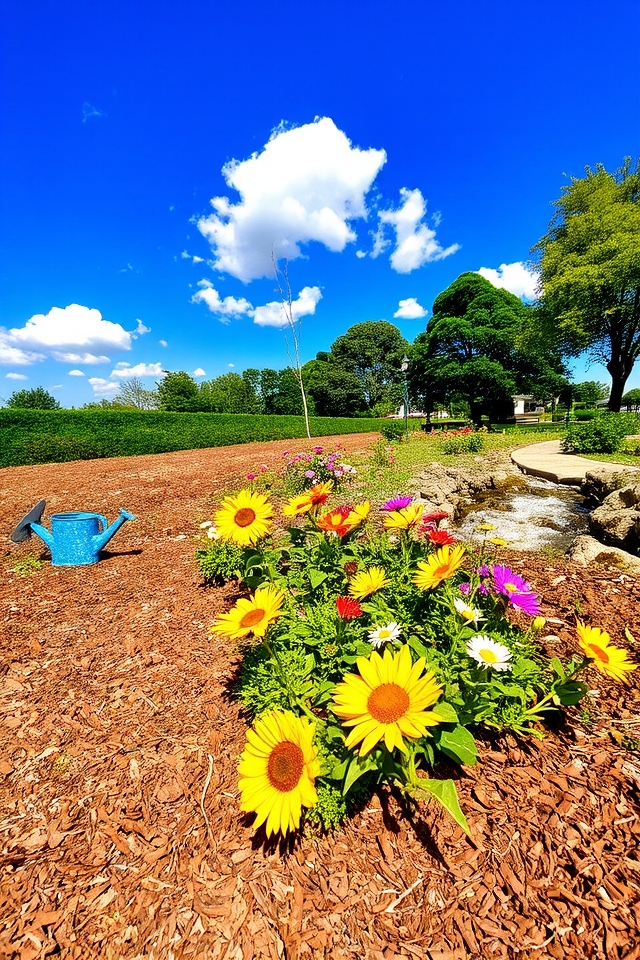
Choosing the right location for your flower garden is essential for thriving blooms. Look for a spot that receives at least 6-8 hours of sunlight daily, as most flowering plants thrive in full sun. Additionally, consider factors like soil drainage, proximity to water sources, and wind protection. Avoid areas with heavy foot traffic or tree roots that can compete for nutrients. By selecting a suitable location, you pave the way for a vibrant and healthy garden.
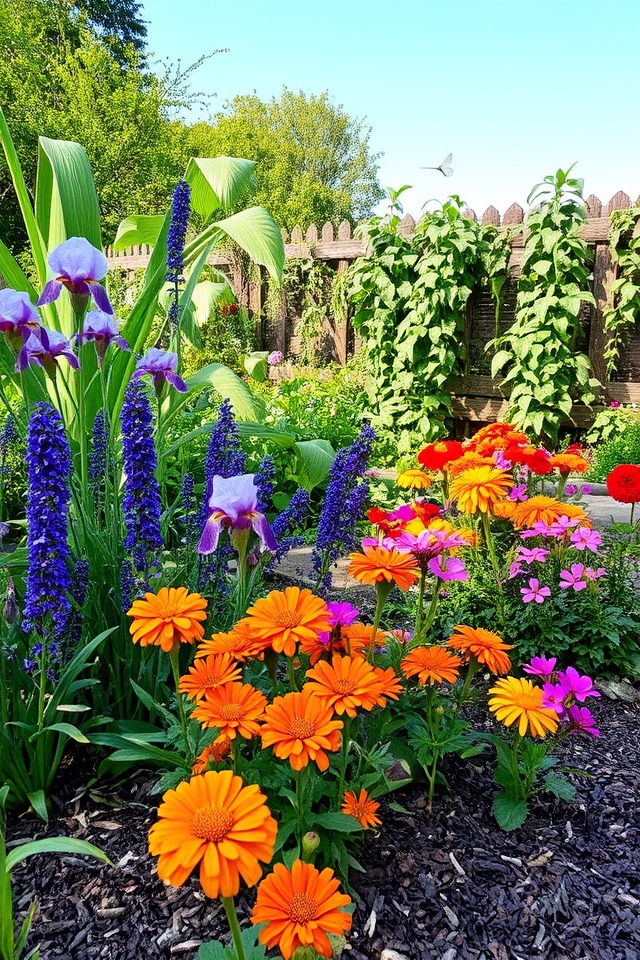
When designing a flower garden, choosing between perennial and annual flowers is essential. Perennials return year after year, providing lasting beauty and often requiring less maintenance once established. They can create a stable foundation for your garden. In contrast, annuals offer vibrant, varied colors and extended blooming seasons, allowing for frequent changes in your garden’s aesthetic. Combining both types can create a dynamic, visually appealing display throughout the seasons. Consider your garden’s conditions and desired upkeep when making your selection.
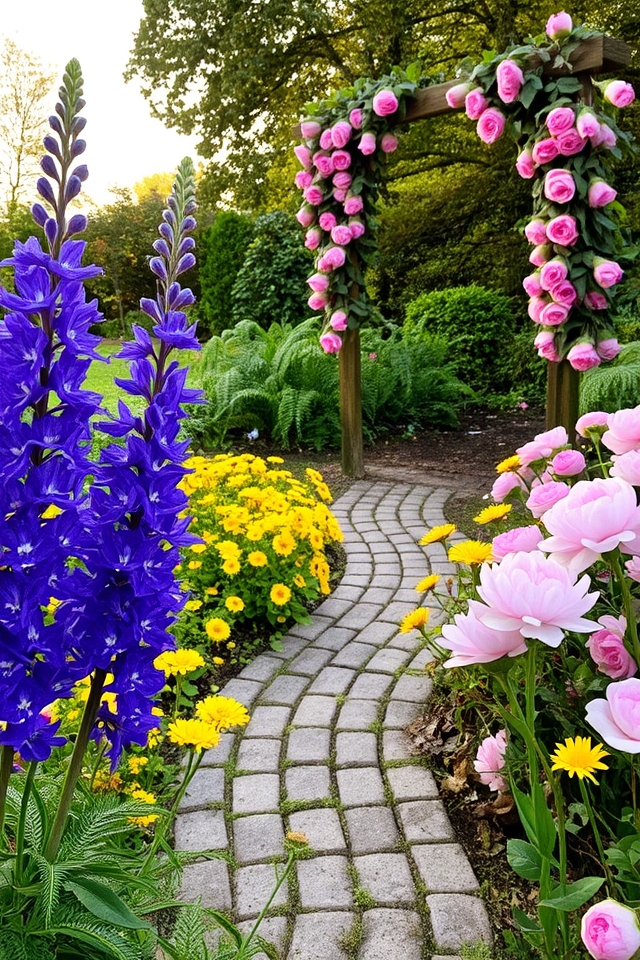
Creating a color palette for your garden is essential to achieve a harmonious and visually appealing space. Start by selecting a dominant color that reflects your personal style or complements your home’s exterior. Incorporate a mix of complementary and contrasting hues to add depth and interest. Consider seasonal blooms, foliage textures, and the garden’s overall design. Remember to assess how different colors interact in various lighting throughout the day for a stunning effect.
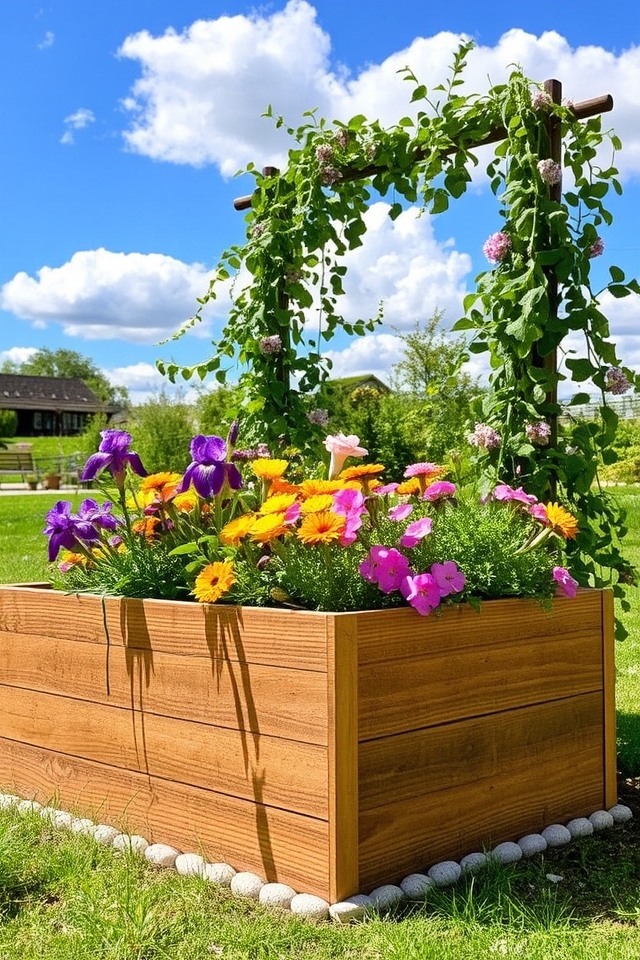
Designing a raised flower bed is an excellent way to enhance your garden’s aesthetics while improving plant health. Start by selecting a sunny location and choosing materials like wood, stone, or metal for the frame. Aim for a height that allows easy access for planting and maintenance. Fill the bed with a nutrient-rich soil mix to guarantee ideal drainage and growth. Incorporate various plant heights and colors for visual interest, and consider adding decorative elements like edging or trellises for added charm.
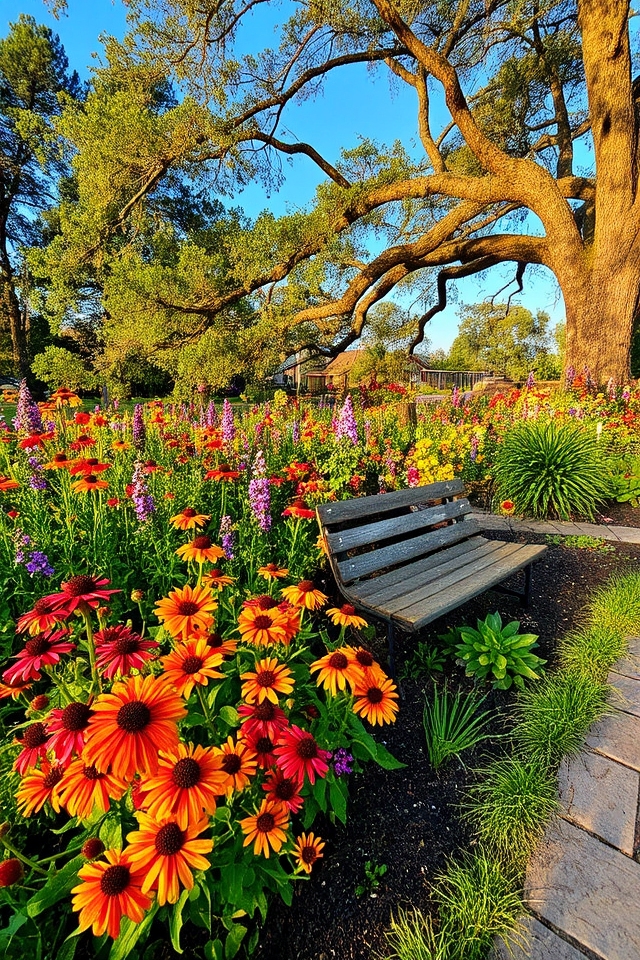
Incorporating native flowers into your garden not only enhances its beauty but also promotes sustainability. Native plants are well-adapted to local climates and soil conditions, requiring less water and minimal maintenance. They provide habitats for local wildlife, such as pollinators and birds, strengthening the ecosystem. By choosing native flowers, gardeners can create vibrant and resilient spaces that support biodiversity while reducing their environmental footprint. Embrace the beauty of your region’s flora for a sustainable garden oasis.

Incorporating edible flowers into your garden not only enhances its beauty but also adds flavor and nutrition to your meals. Flowers like nasturtiums, pansies, and calendulas are not only vibrant but also edible, providing unique tastes and health benefits. These blossoms can be used in salads, teas, and desserts, making your garden a delightful culinary experience. Additionally, growing edible flowers can attract beneficial pollinators, promoting a healthy ecosystem in your garden.
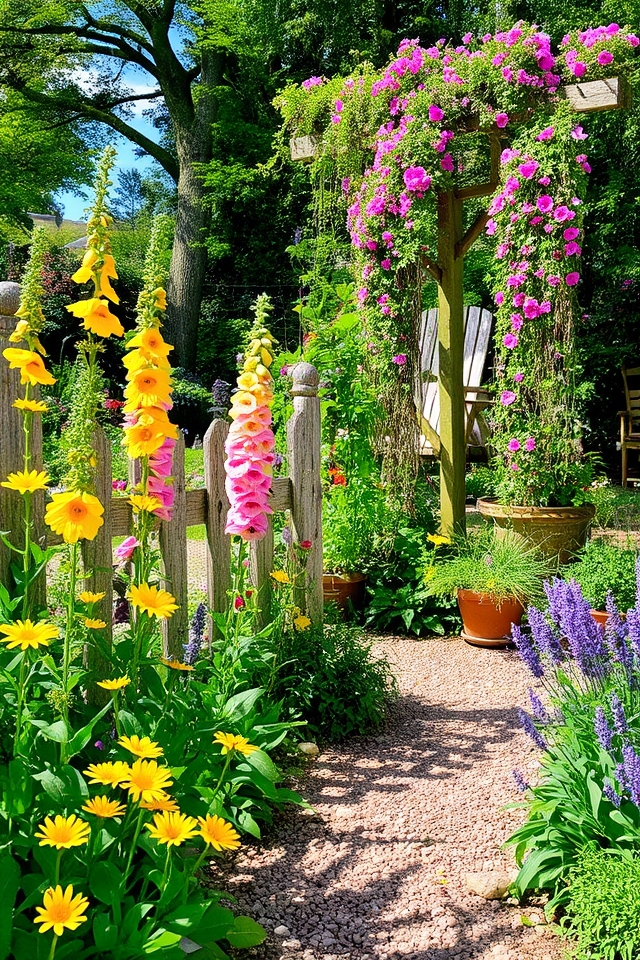
A cottage garden exudes charm and whimsy, creating a picturesque space brimming with colorful blooms and lush greenery. To plant a cottage garden, choose a mix of perennial and annual flowers such as daisies, hollyhocks, and lavender, combined with climbing vines and scent-filled herbs. Incorporate winding paths and rustic elements like trellises or picket fences to enhance the quaint atmosphere. This informal planting style encourages a sense of abundance and invites visitors to enjoy nature’s beauty.
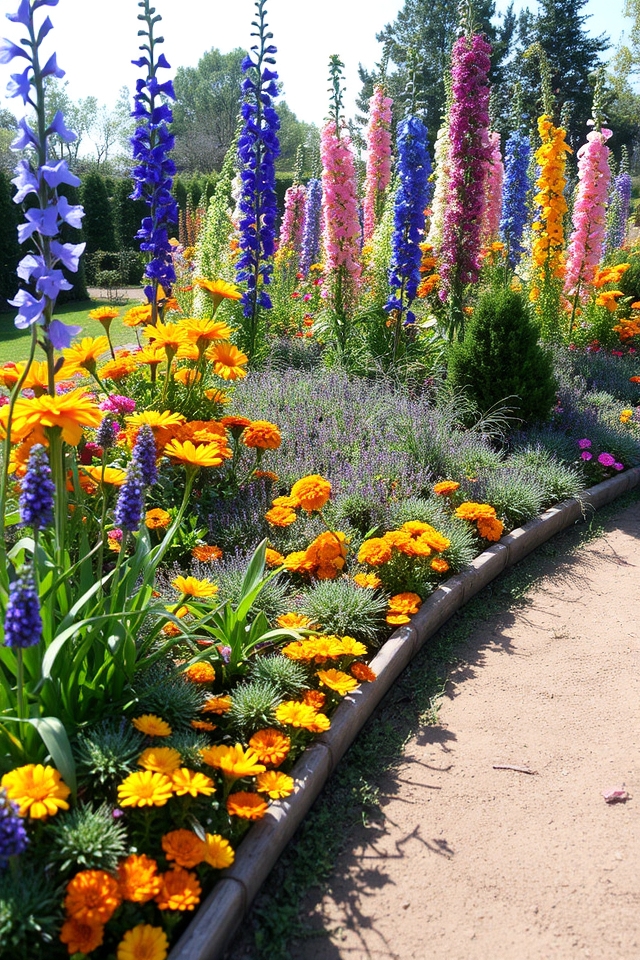
Designing a flower border adds structure and visual appeal to your garden. Start by choosing a consistent theme, selecting flowers of varying heights, colors, and textures to create depth. Use taller plants at the back and shorter ones in the front for an organized look. Consider incorporating evergreen plants or ornamental grasses to maintain interest year-round. Additionally, incorporate pathways or edging materials to define your flower border, enhancing the overall design and providing easy access for care and maintenance.
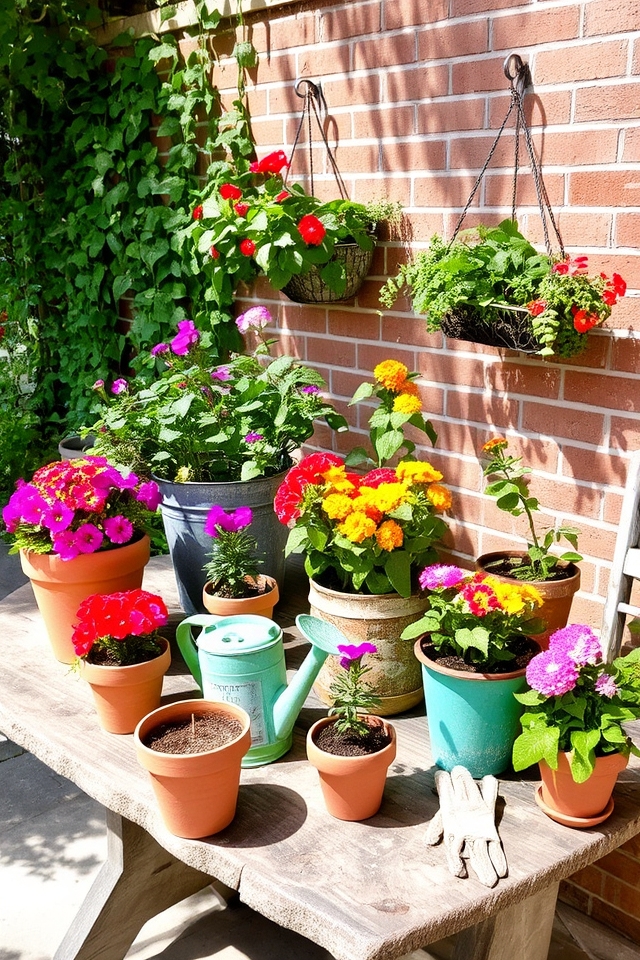
Using containers for a small space garden is a brilliant way to maximize your gardening potential. Containers come in various sizes, shapes, and materials, allowing you to create a diverse and visually appealing garden even in limited areas. They enable you to grow a variety of flowers, herbs, and even vegetables, while also providing mobility to rearrange your garden layout as desired. Plus, they require less maintenance and can enhance your outdoor decor with color and texture.
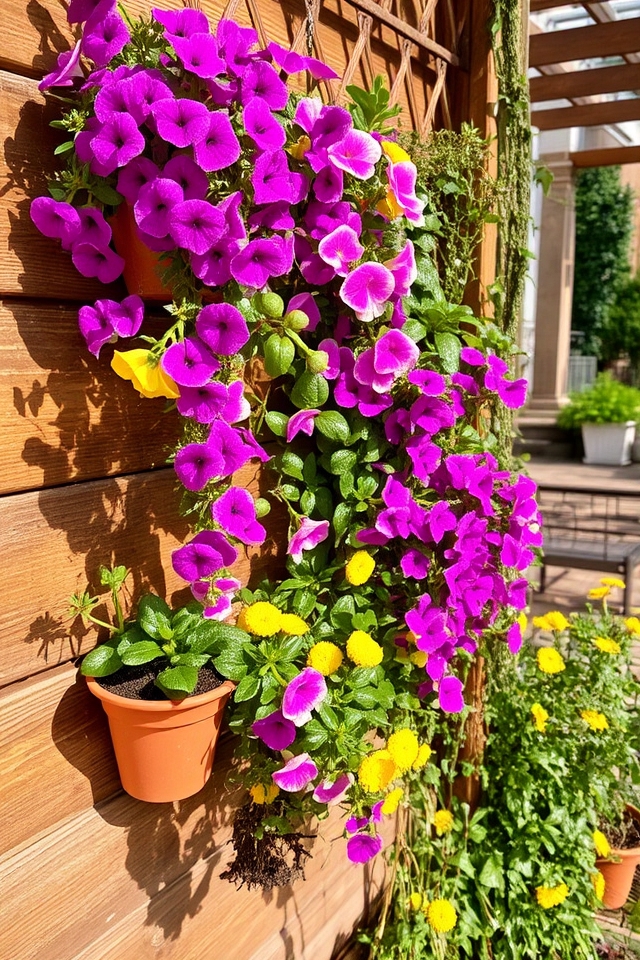
Creating a vertical garden with flowers is a fantastic way to maximize space and add vibrant color to small areas. Utilize wall planters, trellises, or hanging pots to establish layers of blooms. Choose a variety of flowers, such as petunias, succulents, or climbing vines, which can thrive in vertical setups. To guarantee peak growth, select a sunny location and use well-draining soil. This not only beautifies your space but also enhances air quality and promotes relaxation.
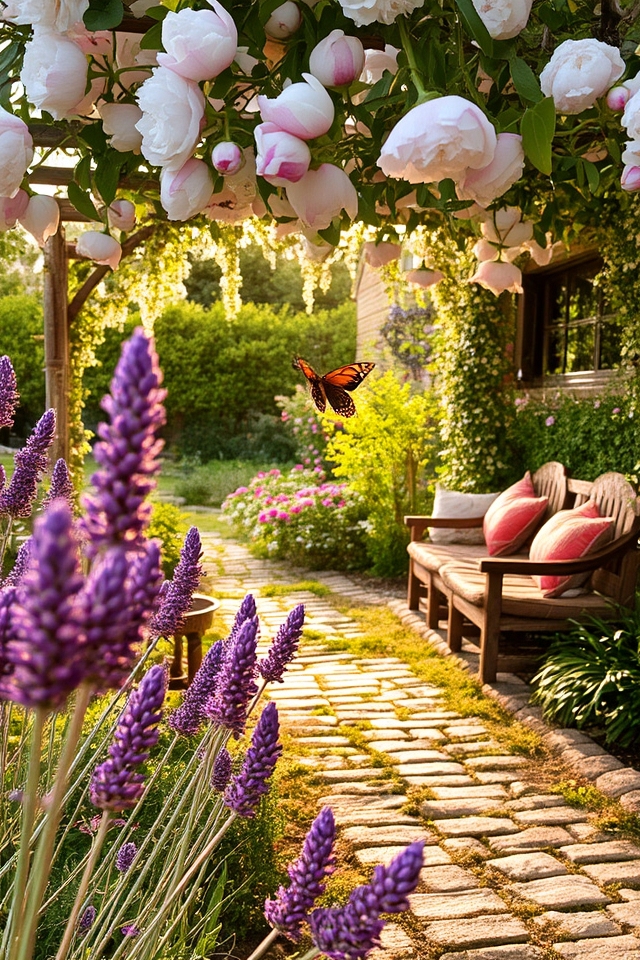
Incorporating fragrant flowers into your garden can elevate the sensory experience, inviting a delightful array of scents that enhance your outdoor space. Consider planting varieties like lavender, peonies, and jasmine, which not only bring beauty but also intoxicating aromas. Arrange these blooms near walkways, patios, or windows to maximize their fragrance and create an enchanting atmosphere. A fragrant garden fosters relaxation, attracts pollinators, and transforms your outdoor area into a peaceful retreat.
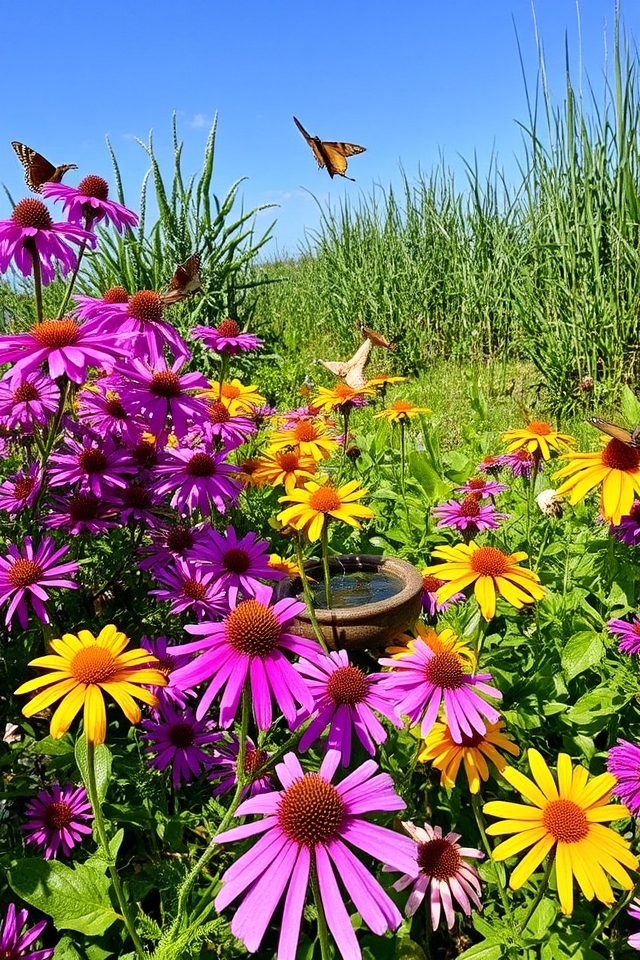
Creating a butterfly garden is a delightful way to attract pollinators while enhancing your landscape. Start by selecting a sunny spot and planting native flowers such as asters, milkweed, and coneflowers, which are favored by butterflies. Incorporate a variety of colors and bloom times to provide a continuous source of nectar. Additionally, include host plants for caterpillars and provide shallow water sources for hydration. By nurturing this vibrant habitat, you’ll support local ecosystems and enjoy the beauty of these enchanting creatures.
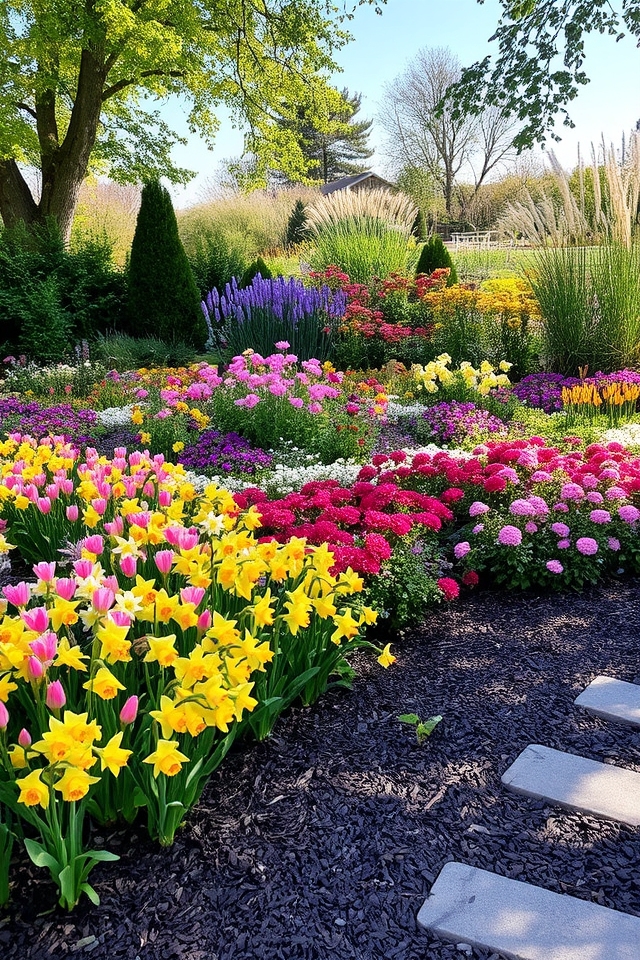
Designing a seasonal flower garden requires careful planning to maximize blooms throughout the year. Start by selecting flowers that thrive in your local climate for each season—spring bulbs like tulips and daffodils, summer perennials such as coneflowers and daylilies, fall favorites like asters and chrysanthemums, and winter-friendly greenery. Incorporate varying heights and colors to create visual interest, while guaranteeing proper spacing for growth. Utilizing layered planting techniques will guarantee your garden remains vibrant and alive with color all year round.
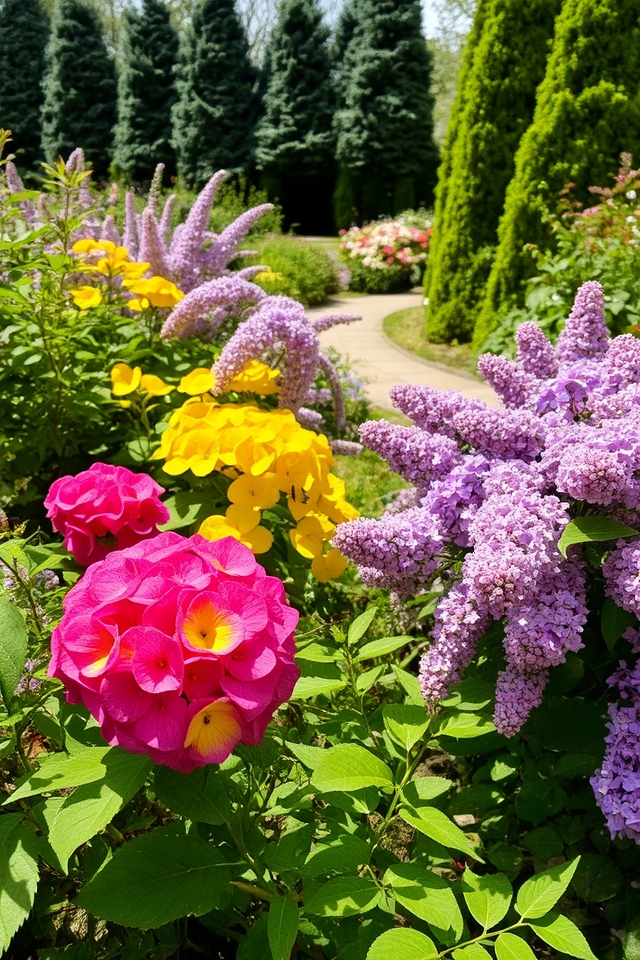
Incorporating flowering shrubs into your garden design adds depth and vibrant color, elevating the overall aesthetic. These versatile plants provide seasonal interest, with blooms appearing in a variety of shapes and sizes throughout the year. Choose a mix of early, mid, and late-blooming varieties to guarantee continuous color from spring to fall. Additionally, flowering shrubs can serve as natural privacy screens or focal points, enhancing the landscape while attracting pollinators like butterflies and bees.
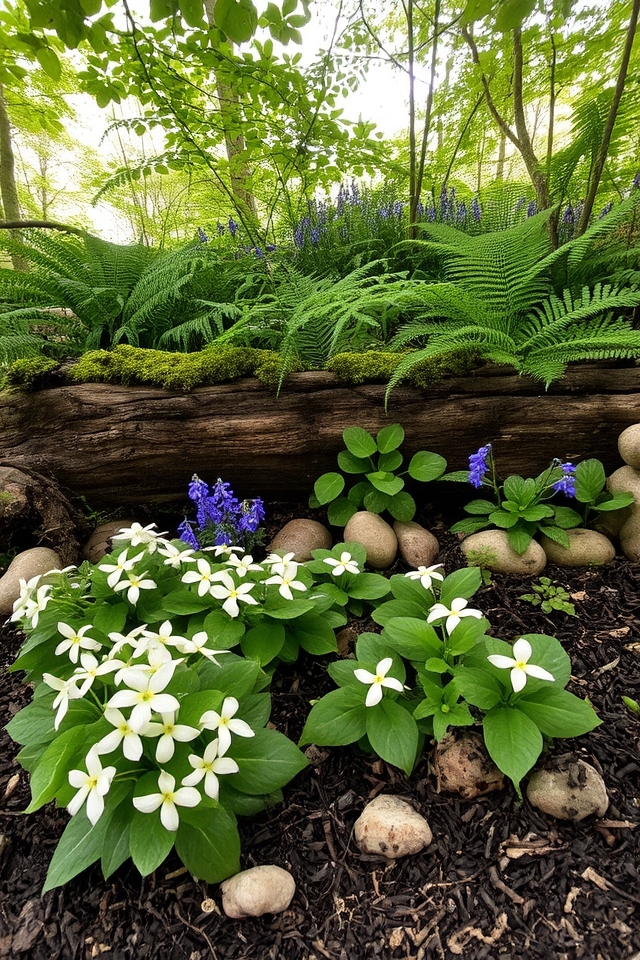
Implementing a woodland flower garden offers a unique opportunity to create a serene, natural oasis. Begin by selecting shade-tolerant plants like trilliums, ferns, and bluebells that thrive in low-light conditions. Incorporate layers of foliage and varying heights to add depth and interest. Use natural elements like rocks and logs to enhance the woodland aesthetic, and mulch to retain moisture. This garden style not only beautifies the space but also supports local wildlife, creating a vibrant ecosystem.
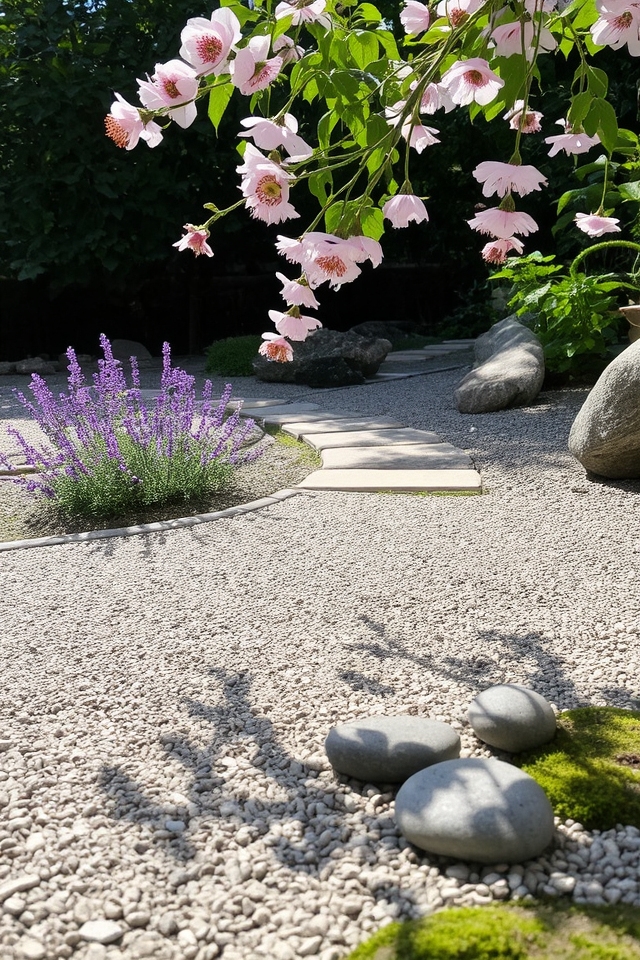
Creating a Zen garden with flower accents blends tranquility with bursts of color, enhancing the serene atmosphere. Utilize gravel or sand to form patterns that promote mindfulness, while incorporating carefully placed flowers like lavender, Japanese anemones, or cherry blossoms. These blooms add visual interest and a touch of nature’s beauty without overwhelming the simplicity of the Zen design. Use natural stones and pathways to guide the eye, allowing the flowers to punctuate the calm landscape harmoniously.

Using flowers to create privacy and screening is an innovative and beautiful way to enhance your outdoor space. Planting tall, dense flowering plants, such as sunflowers, hollyhocks, or flowering vines, can effectively obscure unwanted views and provide a natural barrier. Strategically arranging these plants in layers offers both visual appeal and effective screening. Additionally, incorporating colorful blooms not only enhances privacy but also adds fragrance and attracts pollinators, creating a vibrant, serene atmosphere in your garden.
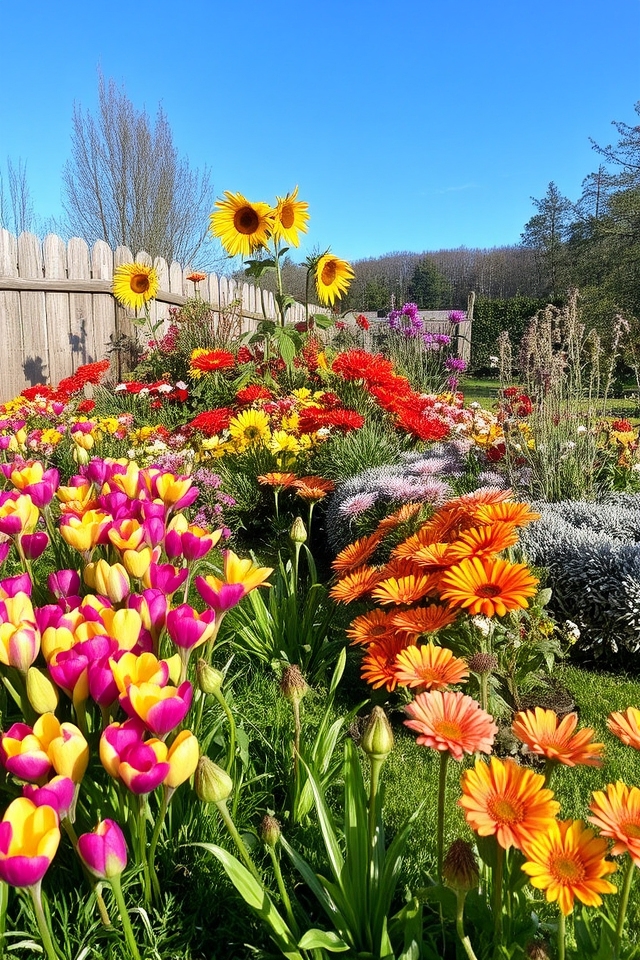
Creating a flower garden that blooms year-round requires thoughtful planning to guarantee a continuous display of color and fragrance. Start by choosing a diverse mix of perennial and seasonal flowers that thrive in your climate. Incorporate early bloomers like crocuses and tulips for spring, while summer favorites such as sunflowers and daisies can bring vibrant yellows and pinks. For fall, consider adding chrysanthemums and asters, and wrap up the year with winter interest plants like hellebores. By layering blooms throughout the seasons, you’ll enjoy a stunning garden all year long.
Your garden is a canvas, waiting for your vibrant touch. By carefully selecting the right flowers and designs, you’re not just planting seeds; you’re sowing joy and creating a living masterpiece. Each bloom symbolizes your unique vision, transforming your outdoor space into a sanctuary of beauty and serenity. Embrace these ideas and watch your garden flourish, reflecting the colors of your creativity throughout the seasons. Let every flower tell your story, inviting others to experience your blossoming paradise.

Don't let aphids, slugs, and caterpillars ruin another plant. Take back control with simple, natural methods that actually work.